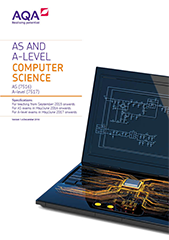4.10 Fundamentals of databases
Conceptual data models and entity relationship modelling
Content |
Additional information |
|---|---|
Produce a data model from given data requirements for a simple scenario involving multiple entities. |
|
Produce entity relationship diagrams representing a data model and entity descriptions in the form: Entity1 (Attribute1, Attribute2, .... ). |
Underlining can be used to identify the attribute(s) which form the entity identifier. |
Relational databases
Content |
Additional information |
|---|---|
Explain the concept of a relational database. |
|
Be able to define the terms:
|
Database design and normalisation techniques
Content |
Additional information |
|---|---|
Normalise relations to third normal form. |
Students should know what properties are possessed by a relation in third normal form. |
Understand why databases are normalised. |
Structured Query Language (SQL)
Content |
Additional information |
|---|---|
Be able to use SQL to retrieve, update, insert and delete data from multiple tables of a relational database. |
|
Be able to use SQL to define a database table. |
Client server databases
Content |
Additional information |
|---|---|
Know that a client server database system provides simultaneous access to the database for multiple clients. Know how concurrent access can be controlled to preserve the integrity of the database. |
Concurrent access can result in the problem of updates being lost if two clients edit a record at the same time. This problem can be managed by the use of record locks, serialisation, timestamp ordering, commitment ordering. |
